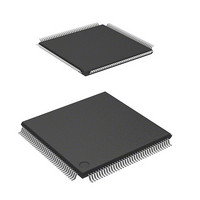DF2166VT33WV Renesas Electronics America, DF2166VT33WV Datasheet - Page 609

DF2166VT33WV
Manufacturer Part Number
DF2166VT33WV
Description
MCU 16BIT FLASH 3V 512K 144-TQFP
Manufacturer
Renesas Electronics America
Series
H8® H8S/2100r
Datasheet
1.HS2168EPI61H-U.pdf
(876 pages)
Specifications of DF2166VT33WV
Core Processor
H8S/2000
Core Size
16-Bit
Speed
33MHz
Connectivity
I²C, IrDA, LPC, SCI, SmartCard
Peripherals
POR, PWM, WDT
Number Of I /o
106
Program Memory Size
512KB (512K x 8)
Program Memory Type
FLASH
Ram Size
40K x 8
Voltage - Supply (vcc/vdd)
3 V ~ 3.6 V
Data Converters
A/D 8x10b; D/A 2x8b
Oscillator Type
External
Operating Temperature
-20°C ~ 75°C
Package / Case
144-TQFP, 144-VQFP
Lead Free Status / RoHS Status
Lead free / RoHS Compliant
Eeprom Size
-
Available stocks
Company
Part Number
Manufacturer
Quantity
Price
Company:
Part Number:
DF2166VT33WV
Manufacturer:
Renesas Electronics America
Quantity:
135
Company:
Part Number:
DF2166VT33WV
Manufacturer:
Renesas Electronics America
Quantity:
10 000
- Current page: 609 of 876
- Download datasheet (5Mb)
16.4
16.4.1
The LPC interface is activated by setting at least one of bits LPC3E to LPC1E (bits 7 to 5) in
HICR0 to 1. When the LPC interface is activated, the related I/O ports (PE7 to PE0, PD5, and
PD4) function as dedicated LPC interface input/output pins. In addition, setting the FGA20E,
PMEE, LSMIE, and LSCIE bits to 1 adds the related I/O ports (ports PD3 to PD0) to the LPC
interface's input/output pins.
Use the following procedure to activate the LPC interface after a reset release.
1. Read the signal line status and confirm that the LPC module can be connected. Also check that
2. Set the I/O addresses of the channels to be used (LADR1 to LADR3) and whether or not the
3. Set the enable bit (LPC3E to LPC1E) for the channel to be used.
4. Set the enable bits (FGA20E, PMEE, LSMIE, and LSCIE) for the additional functions to be
5. Set the selection bits for other functions (SDWNE, IEDIR).
6. As a precaution, clear the interrupt flags (LRST, SDWN, ABRT, and OBF). Read IDR or
7. Set interrupt enable bits (IBFIE3 to IBFIE1, ERRIE) as necessary.
16.4.2
There are ten kinds of LPC transfer cycle: memory read, memory write, I/O read, I/O write, DMA
read, DMA write, bus mastership memory read, bus mastership memory write, bus mastership I/O
read, and bus mastership I/O write. Of these, the chip's LPC supports only I/O read and I/O write
cycles.
An LPC transfer cycle is started when the LFRAME signal goes low in the bus idle state. If the
LFRAME signal goes low when the bus is not idle, this means that a forced termination (abort) of
the LPC transfer cycle has been requested.
In an I/O read cycle or I/O write cycle, transfer is carried out using LAD3 to LAD0 in the
following order, in synchronization with LCLK. The host can be made to wait by sending back a
value other than B'0000 in the slave's synchronization return cycle. However, the LPC in this LSI
always returns a value of B'0000 if the BT interface is not used.
the LPC module is initialized internally.
bidirectional registers, KCS interface, SMIC interface, and BT interface are to be used.
used.
TWR15 to clear IBF.
Operation
LPC Interface Activation
LPC I/O Cycles
Rev. 3.00, 03/04, page 567 of 830
Related parts for DF2166VT33WV
Image
Part Number
Description
Manufacturer
Datasheet
Request
R

Part Number:
Description:
KIT STARTER FOR M16C/29
Manufacturer:
Renesas Electronics America
Datasheet:

Part Number:
Description:
KIT STARTER FOR R8C/2D
Manufacturer:
Renesas Electronics America
Datasheet:

Part Number:
Description:
R0K33062P STARTER KIT
Manufacturer:
Renesas Electronics America
Datasheet:

Part Number:
Description:
KIT STARTER FOR R8C/23 E8A
Manufacturer:
Renesas Electronics America
Datasheet:

Part Number:
Description:
KIT STARTER FOR R8C/25
Manufacturer:
Renesas Electronics America
Datasheet:

Part Number:
Description:
KIT STARTER H8S2456 SHARPE DSPLY
Manufacturer:
Renesas Electronics America
Datasheet:

Part Number:
Description:
KIT STARTER FOR R8C38C
Manufacturer:
Renesas Electronics America
Datasheet:

Part Number:
Description:
KIT STARTER FOR R8C35C
Manufacturer:
Renesas Electronics America
Datasheet:

Part Number:
Description:
KIT STARTER FOR R8CL3AC+LCD APPS
Manufacturer:
Renesas Electronics America
Datasheet:

Part Number:
Description:
KIT STARTER FOR RX610
Manufacturer:
Renesas Electronics America
Datasheet:

Part Number:
Description:
KIT STARTER FOR R32C/118
Manufacturer:
Renesas Electronics America
Datasheet:

Part Number:
Description:
KIT DEV RSK-R8C/26-29
Manufacturer:
Renesas Electronics America
Datasheet:

Part Number:
Description:
KIT STARTER FOR SH7124
Manufacturer:
Renesas Electronics America
Datasheet:

Part Number:
Description:
KIT STARTER FOR H8SX/1622
Manufacturer:
Renesas Electronics America
Datasheet:

Part Number:
Description:
KIT DEV FOR SH7203
Manufacturer:
Renesas Electronics America
Datasheet:











